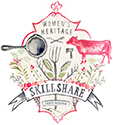Shepherd's Purse Tincture
February into March is the time to harvest Shepherd's Purse, aka Capsella bursa-pastoris in Southern California, it grows wild throughout the spring and summer in many areas in North America. In Asia it is farmed as a food crop! This beautiful little plant, with tiny heart shaped seedpods, is one of my favorites. Every year, I make sure I gather some to make a tincture so that I have it on hand when I prepare birth kits. This delicate herb is best used fresh, as that is when it is the most potent.
Rosemary Gladstar calls it "The herb par excellence for hemorrhaging during childbirth," and also recommends it to ease excessive menstrual flow and nosebleeds (Gladstar, 1993). Susun Weed says "it can stop postpartum hemorrhage in as little as five seconds"(Weed 1986).
Shepherd's purse is beneficial for everyone though, not just women in childbirth or those prone to nosebleeds. This mild member of the mustard group is high in oxytocin, contains more calcium per 100g than milk, and has all the factors needed for calcium absorption. The entire plant is edible. The fresh leaves and flowers are wonderful in salads, and can also be dried and added to soups and stews. The heart-shaped seedpods are delicious, and look adorable sprinkled on top of flat bread or pizza, or even as a topping for cupcakes and other desserts.
To make a Shepherd's Purse tincture:
- Fill a mason jar 3/4 full with freshly harvested Shepherd's Purse
- Pour vodka or brandy over the herb, up to 1/2 inch from the top of the jar, making sure to cover the herb completely
- Shake once a day for a week and then set aside in a dark spot for three more weeks
- Strain out plant material, pouring your tincture through a coffee filter
- Pour into dropper bottles and you're all set
For dosage, Susun Weed recommends "10-20 drops as needed" (Weed, 1986).
As always, make sure you are foraging responsibly, that you have permission to harvest and that you have properly identified this plant (the heart-shaped seed packets make it pretty easy!).
Enjoy!
Love, Ashley
*This post has not been evaluated by the FDA and is not intended to replace the advice of your healthcare professional, nor to diagnose, treat, or prevent any disease.
References:
- "Herbal Healing for Women" by Rosemary Gladstar,
- "Wise Woman Herbal for the Childbearing Year" by Susun S. Weed
- "Edible and Useful Plants of California" by Charlotte Bringle Clarke



